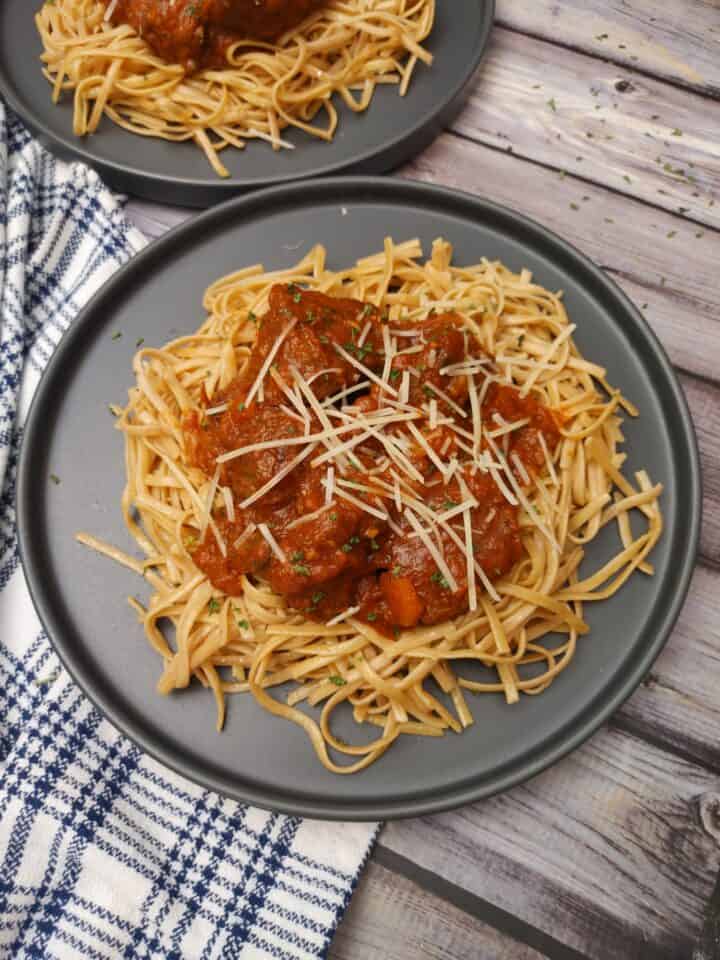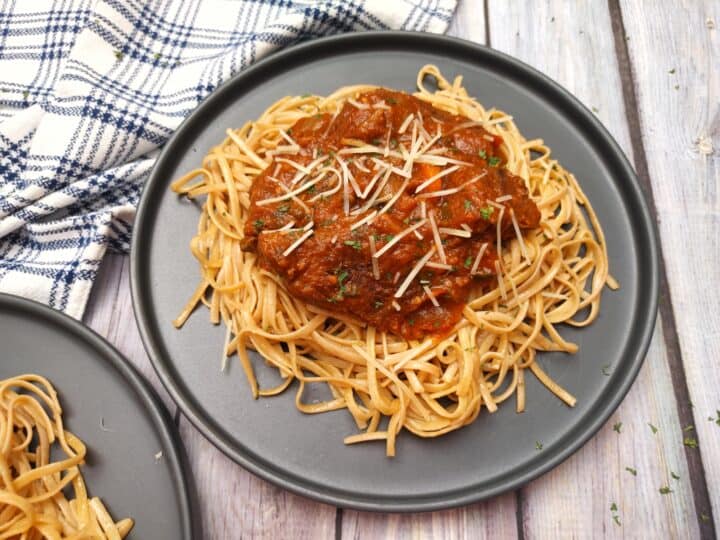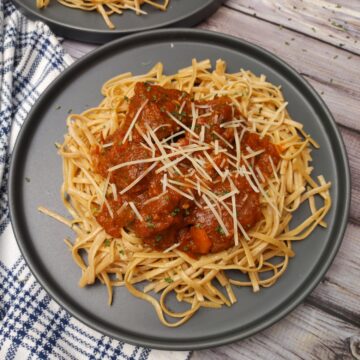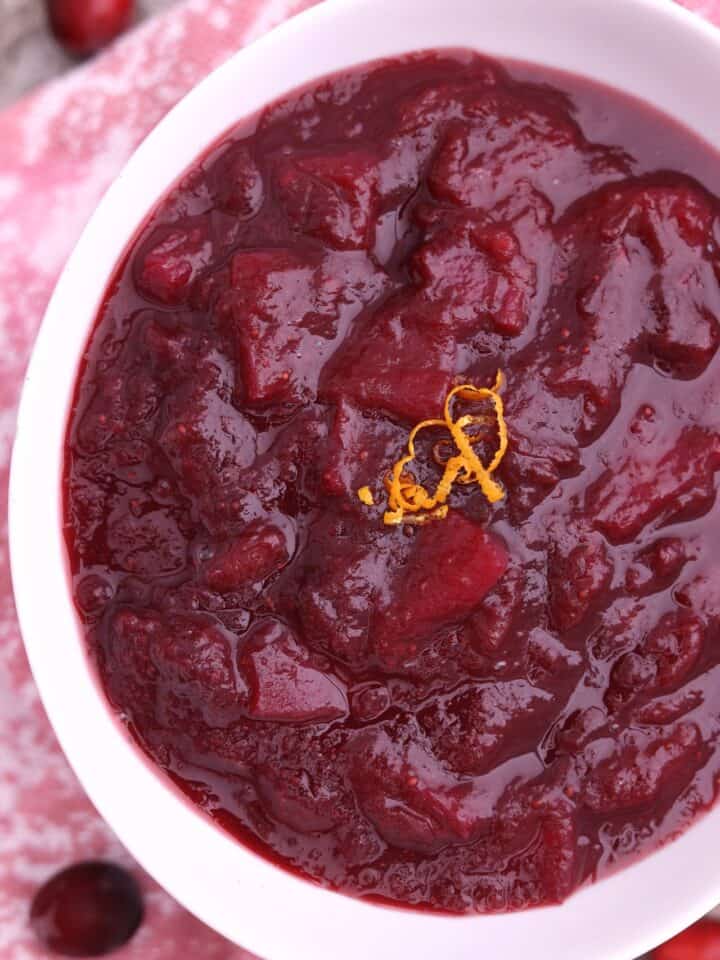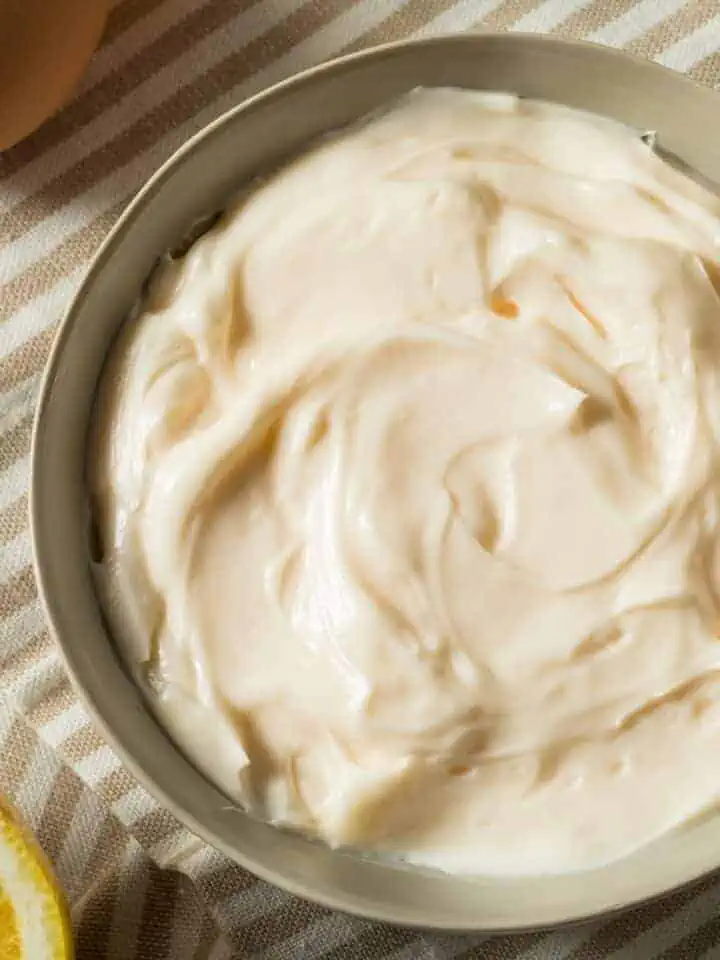A simple yet full-of-flavor Paraguayan-style Red Sauce recipe: made with fresh tomatoes and canned tomatoes, basil, Poblano pepper, onion, garlic, and extra virgin olive oil.
These natural ingredients are slowly simmered together to develop a rich taste and thick texture that your entire family will love. It is versatile and easily complements any pasta dish.
How to Make Red Sauce
Note: The full instructions are provided in the recipe card below.
Heat the olive oil over medium-high heat in a large saucepan. When hot, add the garlic and cook for 1 minute. Add the fresh tomatoes, diced tomatoes, poblanos pepper, and onion—season with salt, sugar, and red pepper flakes to taste.
Reduce the heat to medium-low and cook until tender and the liquid reduces by half. Add ½ cup wine, whisking to deglaze the bottom of the pan.
Add 1 Cup of water and bring to a gentle boil. Reduce the heat to low and simmer, uncovered, for 75-90 minutes, stirring the red sauce occasionally or until it is no longer watery. Taste and adjust seasoning if necessary.
Add basil right before serving. Enjoy our Super Simple Red Sauce "Paraguayan Style"
Related Recipes:
Recipe
Easy Red Sauce
Ingredients
- ¼ cup extra virgin olive oil
- 1 large onion , finely diced
- 8 cloves garlic , minced
- 1-¼ teaspoons Kosher salt , to taste
- 1 28 oz can crushed or diced tomatoes
- 5 fresh plum tomatoes , diced
- 1 Poblano pepper or red bell pepper , finely chopped
- ½ teaspoon red pepper flakes (optional)
- ½ teaspoon ground black pepper
- 1 cup water , as needed
- 2 teaspoons sugar
- ½ cup torn basil
- ½ cup red wine such as Malbec
Instructions
- Heat the olive oil over medium-high heat in a large saucepan. When hot, add the garlic and cook for 1 minute. Add the fresh tomatoes, diced tomatoes, poblanos pepper, and onion—season with salt, sugar, black pepper and red pepper flakes to taste.
- Reduce the heat to medium-low and cook until tender, and the liquid reduces by half. Add ½ cup wine, whisking to deglaze the bottom of the pan.
- Add 1 Cup of water and brings to a gentle boil. Reduce the heat to low and simmer, uncovered, for 75-90 minutes, stirring the red sauce occasionally, or until the red sauce is no longer watery. Taste and adjust seasoning if necessary. Add basil right before serving. Enjoy our Super Simple Red Sauce "Paraguayan Style"
Notes
All nutritional information is based on third-party calculations and is only an estimate. Each recipe and nutritional value will vary depending on the brands you use, measuring methods, and portion sizes per household.

